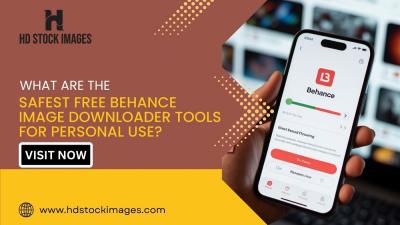In today’s digital landscape, sharing valuable content on LinkedIn is crucial for building connections and enhancing your professional brand. One effective strategy to boost engagement is by adding links to your LinkedIn posts. Not only do links direct your audience to additional information, but they also encourage interaction and foster discussions. In this post, we’ll explore why links matter and how to effectively incorporate them into your
Why Links Matter on LinkedIn
Links on LinkedIn are more than just URLs; they’re gateways to deeper conversations, insightful resources, and increased visibility. Here’s why adding links to your posts can significantly enhance engagement:
- Driving Traffic: Including links can lead your audience to articles, blogs, or your website, increasing traffic and potentially converting views into leads.
- Enhancing Credibility: By linking to reputable sources or your own well-researched content, you establish yourself as a knowledgeable figure in your field. For example, if you’re discussing industry trends, linking to a study can bolster your argument.
- Encouraging Interaction: Posts with links often invite comments and discussions. When you share a relevant article, ask your audience for their opinions. This can spark meaningful conversations.
- Improving Visibility: LinkedIn’s algorithm favors posts with external links, increasing the chances that your content will be seen by a broader audience. This can help you reach connections beyond your immediate network.
- Variety in Content: Mixing links with your regular posts adds diversity to your content strategy. You can share diverse formats like articles, videos, or infographics, keeping your audience engaged.
Incorporating links in your LinkedIn posts can be a game changer, so take advantage of this powerful tool to enhance your professional presence!
3. Types of Links You Can Add
When it comes to enhancing your LinkedIn posts, the *type of link* you share can significantly impact engagement. Here are some popular types of links you might consider:
- Articles and Blog Posts: Share links to articles or blog posts that relate to your industry. This provides value to your audience and establishes you as a thought leader.
- Videos: Whether it’s a tutorial, a webinar, or a promotional video, linking to video content can boost interaction. People love visual content!
- Infographics: If you have a visually appealing infographic, link to it. Infographics can help explain complex topics in a digestible format, making them share-worthy.
- Webinars and Online Courses: If you’re hosting a webinar or have a course to offer, include the link. This can not only drive registrations but also foster community engagement.
- News Articles: Share relevant news articles to keep your audience informed. It's a great way to initiate discussions around trending topics.
By utilizing various types of links, you can diversify your content and keep your audience engaged. Remember, the key is to ensure that the links are relevant and provide genuine value to your connections!
4. Step-by-Step Guide to Adding Links
Ready to add links to your LinkedIn posts? It’s easier than you might think! Follow this simple step-by-step guide:
- Log into Your LinkedIn Account: Start by logging into your LinkedIn profile.
- Create a New Post: Click on the “Start a post” option at the top of your homepage.
- Compose Your Message: Write your post content. Make it engaging and relevant to your audience. Consider asking a question to initiate interaction!
- Add Your Link: Paste the URL you want to share in the post. LinkedIn will automatically fetch a preview of the link, making your post visually appealing.
- Customize the Preview: If you’d like, you can delete the link text once the preview appears, so your post looks cleaner.
- Use Hashtags: Include relevant hashtags to increase the visibility of your post.
- Publish Your Post: Click “Post” to share your content with your network!
And voilà! You’ve successfully added a link to your LinkedIn post. Keep experimenting with different types of links and content to see what resonates best with your audience.
5. Best Practices for Using Links
Adding links to your LinkedIn posts can significantly boost engagement, but to get the most out of them, it's essential to follow some best practices. Here’s how to do it effectively:
- Choose Relevant Links: Always ensure that the links you share are directly related to the content of your post. For example, if you’re discussing the latest marketing trends, link to a reputable article or study on that topic.
- Use Shortened URLs: Long URLs can be messy and unappealing. Use URL shorteners like Bitly or TinyURL to create neat, compact links that are visually appealing.
- Include a Call-to-Action: Encourage your audience to click the link by adding a compelling call-to-action. Phrases like “Check this out” or “Learn more here” can prompt users to engage.
- Limit the Number of Links: Too many links can overwhelm readers. Aim for one or two relevant links per post to maintain clarity and focus.
- Preview Your Links: When you share links, LinkedIn often generates a preview. Ensure that the preview displays correctly and is enticing to encourage clicks.
By adhering to these best practices, you can maximize the effectiveness of the links in your LinkedIn posts and keep your audience engaged.
6. Measuring Engagement from Links
Understanding how your audience interacts with the links in your LinkedIn posts is crucial for refining your content strategy. Here are effective ways to measure this engagement:
- Click-Through Rate (CTR): Track how many people clicked on your links versus how many people saw your post. This percentage will give you a clear idea of the effectiveness of your links.
- LinkedIn Analytics: Utilize LinkedIn’s built-in analytics to see metrics like views, likes, comments, and shares. This data can help you determine what content resonates most with your audience.
- UTM Parameters: Add UTM codes to your links before sharing. This will allow you to track traffic from LinkedIn in Google Analytics, giving you insights into user behavior on your linked pages.
- Engagement Metrics: Look beyond clicks. Measure engagement by analyzing comments or shares that your posts receive, as they indicate interest and interaction with your content.
- A/B Testing: Experiment with different types of links or post formats. Try posting the same content with different links and see which performs better to refine your link-sharing strategy.
By measuring the engagement from your links, you can fine-tune your approach to better connect with your audience and enhance your LinkedIn presence.
How to Add Links to Your LinkedIn Posts for Better Engagement
Adding links to your LinkedIn posts can significantly enhance engagement by directing your audience to valuable content. Whether you're promoting your own blog, sharing articles, or directing readers to your website, effective link integration is key. Here’s a step-by-step guide to help you maximize your LinkedIn posts with links.
1. Choose Relevant Content: Before posting, ensure the link you want to add is relevant to your audience. This could be a recent blog post, a news article, or a webinar registration page.
2. Shorten Your Links: Use link shorteners like Bitly or TinyURL to make your links more visually appealing. This can also help track clicks.
3. Craft Engaging Text: Pair your link with a captivating introduction. Here’s a simple format:
| Post Example | Engagement Hook |
|---|---|
| Discover the latest marketing trends. | Read More Here! |
| Join our webinar on career growth. | Register Now! |
4. Use Hashtags: Incorporate relevant hashtags to extend your reach. For example, #Marketing, #CareerAdvice, or #LinkedInTips.
5. Monitor Engagement: After posting, track likes, shares, and comments to understand what resonates with your audience.
In conclusion, incorporating links in your LinkedIn posts is a powerful way to boost engagement and drive traffic. By selecting relevant content, crafting engaging messages, and utilizing link shorteners, you can create posts that captivate your audience and encourage interaction.










